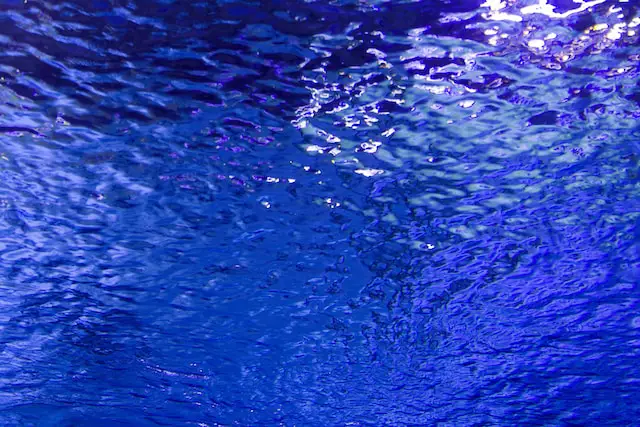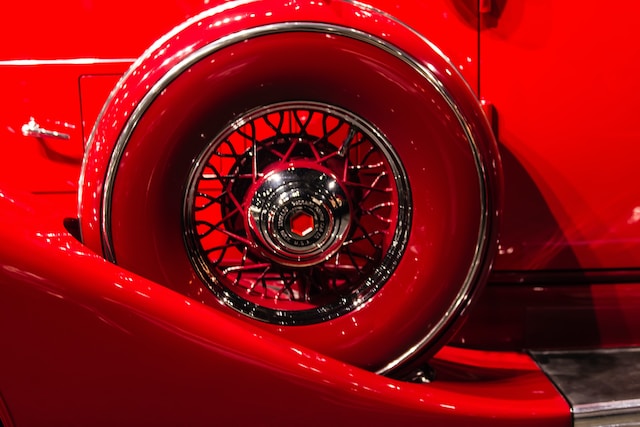The choice between matte and glossy ultimately comes down to personal preference and the intended use of the material. If you prioritize a sleek appearance with vibrant colors and don’t mind some glare or fingerprints, then glossy may be your ideal option. On the other hand, if you prefer a more natural look without reflections or smudges, then matte might be your best bet.
What is matte?
(Photo by jewad alnabi on Unsplash )

Matte is a finish that lacks a glossy or shiny effect. It has a flat, non-reflective surface with little to no glare. Think of it as the opposite of gloss – instead of bright and reflective, matte finishes are muted and subdued.
One advantage of using matte materials is that they tend to look more sophisticated and professional than their glossy counterparts. This makes them ideal for printing important documents such as resumes, brochures, business cards or invitations.
Another benefit of opting for matte finishes is because they don’t easily show fingerprints or smudges compared to glossy ones which can be difficult to clean without leaving marks behind.
Matte paper also offers better color reproduction because there’s no light reflection on its surface. The result is colors appear richer and deeper than when printed on glossy paper where some details might be lost due to excessive shine.
In summary, if you’re looking for understated elegance in your print materials while keeping things clean and easy-to-read at the same time, then you should definitely consider going with Matte finish!
What is glossy?
(Photo by engin akyurt on Unsplash )

Glossy is a finish that adds shine and depth to a surface. It’s commonly used in printing, photography and product packaging to give images an eye-catching boost. Glossy surfaces reflect light more easily than matte ones, resulting in brighter and more vivid colors.
In terms of textures, glossy surfaces are usually smooth to the touch with no visible texture or grain. This makes them perfect for showcasing intricate details and fine lines. They’re also great for creating a modern and sleek look that instantly grabs attention.
Glossy finishes can be achieved through various techniques such as adding a clear coating or lamination onto the material. Some common materials that use glossy finishes include photo paper, vinyl stickers, magazines covers, business cards and even electronic devices like smartphones.
While glossy finishes offer many advantages such as enhancing color vibrancy and providing durability against wear-and-tear, they may not be suitable for all situations or preferences. Their reflective nature can sometimes create unwanted glare which might make them less desirable in certain lighting conditions.
It’s essential to consider your specific needs before choosing between matte or glossy finishes since both have their unique benefits depending on what you want to achieve with your project or product design.
Matte Vs. Glossy – Key differences
When it comes to the key differences between matte and glossy finishes, there are a few important factors to consider. Matte finishes have a non-reflective, flat appearance with minimal shine or glare. On the other hand, glossy finishes provide a highly reflective and shiny surface that can enhance colors and make images appear more vibrant.
One of the most significant differences between these two types of finishes is how they handle fingerprints and smudges. Glossy surfaces are notorious for showing fingerprints and smudges very easily, while matte surfaces tend to hide them much better. This makes matte ideal for items that will be frequently touched or handled.
Another difference is durability – glossy coatings tend to be more scratch-resistant than their matte counterparts because they contain additional protective layers. However, scratches on glossy surfaces are far more visible due to their high reflectivity.
It’s worth noting that different materials may perform differently under each finish type – for example, photographs may look sharper under a glossy finish while artwork might benefit from the muted tones of a matte coating.
Both types of finish have their own unique benefits depending on your needs and personal preferences.
Which is better: matte and glossy?
When it comes to determining which finish is better between matte and glossy, it ultimately boils down to personal preference. Both have their unique advantages and disadvantages.
Matte finishes are often preferred for those who want a more subtle, muted look. They don’t reflect light as much as glossy finishes do, making them ideal for prints with lots of text or graphics that require high contrast. Matte papers are also less likely to show fingerprints or smudges and tend to be easier on the eyes when viewed for long periods.
On the other hand, glossy finishes offer vibrant colors with exceptional clarity, depth, and detail. They’re perfect for photos because they can make images appear sharper and brighter than any matte paper could ever achieve. Glossy papers also give off a luxurious feel; hence why they’re commonly used in magazines.
Ultimately choosing between matte or gloss will depend on what you need your print project to accomplish: If you’re looking for something sleeker with higher contrast then choose Matt; if vibrancy is key go Glossy!
Which is cheaper: Matte or glossy?
When it comes to the price difference between matte and glossy finishes, it usually depends on various factors such as the medium you want your print to be displayed in. In general, glossy prints tend to be more expensive than their matte counterparts.
The reason behind this is that a glossy finish requires additional coating or lamination process which increases production costs. On top of that, glossy paper tends to use higher quality materials which also adds up to its cost.
Meanwhile, matte finish prints are generally cheaper since they require less processing and can easily be printed on standard paper stocks. However, keep in mind that there are exceptions where certain premium matte papers may come at a higher price point compared to regular gloss papers.
Ultimately, whether you choose matte or glossy should not solely depend on the cost but rather what best suits your needs and preferences.
How to choose between matte and gloss?
When choosing between matte and gloss finishes, it’s important to consider the purpose of your project and personal preference.
For photographs or prints intended for framing, a matte finish may be the way to go as it reduces glare and provides a more subtle look. Glossy finishes tend to be more vibrant and eye-catching, making them ideal for marketing materials like brochures or flyers.
If durability is a concern, glossy finishes are typically more resistant to scratches and fading than matte finishes. However, they also tend to show fingerprints easily which can detract from the overall appearance.
Consider the lighting in the space where your project will be displayed. If there is ample natural light or overhead lighting that creates glare on shiny surfaces then perhaps a matte finish is preferable.
Ultimately, it comes down to personal preference – if you love the sheen of gloss but don’t want fingerprints all over your artwork then choose an option with an “eggshell” finish- somewhere in between high-gloss shine and flatness- both looks great!
Featured Image By – Artak Petrosyan on Unsplash








